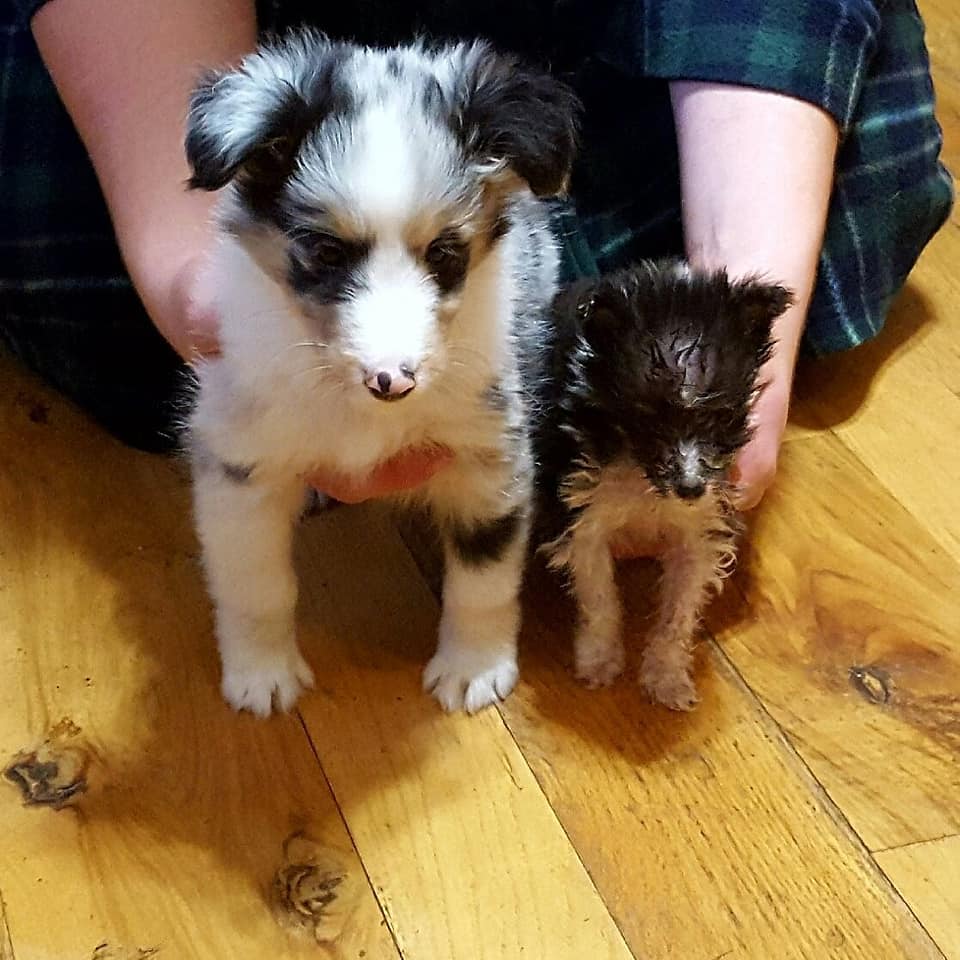
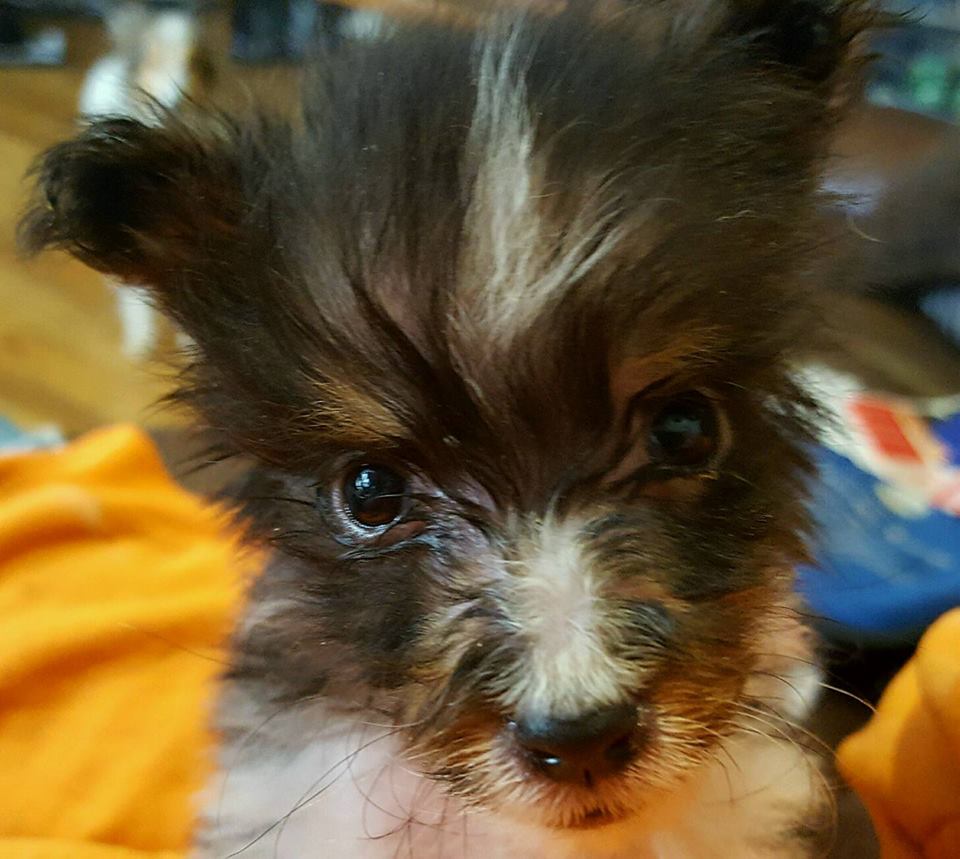
A small for gestational age (SGA) puppy is a specific term. While some may think it is a synonym for “runt puppy”–small for gestational age puppies are born 40% of the normal birth weight or less for their specific breed or versus what would be expected in the case of a mixed breed puppy.
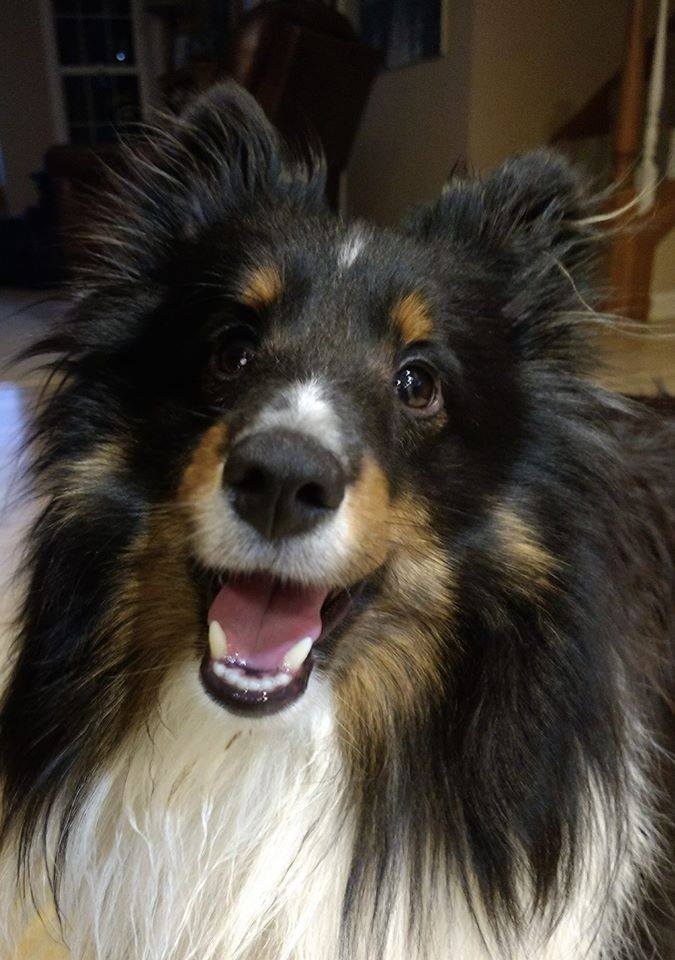
Our fascination with small for gestational age puppies began with Echo. Echo beat the odds and remained very small, has a large personality and is smart, athletic and driven. At the time the breeder would do all she could over a three week period for SGA puppies. She saved 1 in 10 of these small for gestational age puppies. Puppies like Echo made the effort worth the heartbreak. When we first saw Echo, she was already committed to a home. If Echo was available, that might have been the end of the story.
We fell in love with the breeder’s dogs. She was committed to them. She bred for personality and health. She outcrossed rather than line bred. This was important to us. She would add older champions to her line. Often they had lived 10 years or more and remained active and in good health. She wanted to pass these traits on to her puppies. Her dogs were certainly beautiful, but their purpose was to be a family member, she bred them to be healthy and lovable.
We waited our turn for a puppy. We were drawn to a puppy that was just one day old. We had previously told the breeder the only coat we did not want was a Tri colored coat, yet this Tri was absolutely stunning to us.
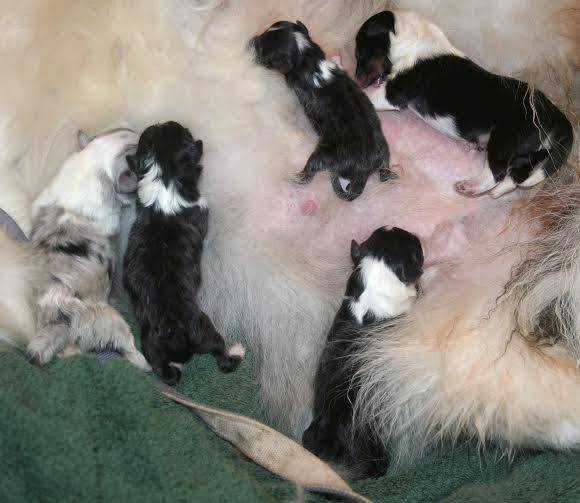
That puppy is now called Chaos, as we felt we needed a little Chaos in our lives. Chaos was one of a litter of five. Two of the five in the litter were born small for gestational age. One of the SGA pups passed within the first 24 hours. The second puppy was improving in health, crawled under the water bottle being used to heat it, suffocated and died. Seeing Echo live, to see what an SGA puppy could truly be, and learning of the passing of this SGA pup that was a litter mate of our puppy, served to be the inspiration for the first incubator. There had to be a better way to heat the SGA puppies. We set out to build an incubator that could precisely control the environment, and find the right environmental conditions to save SGA puppies.
Our goal was to improve the save rate of SGA puppies from 10% to 50%. 18 months after building the first incubator, the breeder saved 17 of 18 SGA puppies–94%.
Small for gestational age is not the same as a premature puppy. A premature puppy may be small and on track in development for their gestational age. Similarly, there are runts who do not meet the definition of small for gestational age. The runt may be the smallest of the litter, but sufficient in size not to meet the classification.

Why is it important to classify small for gestational age?
Small for gestational age puppies are considered by many to be frequently occurring and one of the most difficult puppies to save. The overwhelming majority of SGA puppies go on to live long, healthy lives. If you can save small for gestational age puppies, you are well prepared to save puppies with other conditions.
What causes a small for gestational age puppy?
In some cases a puppy is simply genetically small. The way the father’s sperm and the mother’s egg combined led to a puppy that is destined to be significantly smaller than what would be expected for the breed or less than half the size of its litter mates when grown. In other cases, the puppy is born because there was impaired nutrition flow at its position in the womb. Sometimes it’s both, a puppy that is genetically small and had a less nutrients delivered to their position in the womb.
SGA puppies will often also be born seemingly having no visible body fat. Their smaller body mass, combined with insufficient body fat results in impaired ability to retain body fat. Simply stated, compared to a puppy within the normal birth weight range, and SGA puppy will have a internal body temperature several degrees lower.
The reason most SGA puppies die in the first days of life is related to the inability to regulate internal temperature. Temperature regulation is further impaired by being born wet. Evaporation takes substantial heat energy away from the SGA puppy. In the same conditions that produce good results for normal birth weight puppies, the SGA puppy will have an internal temperature below 95°F. This will greatly impair the ability to process colostrum, and in turn does not allow for the development of a strong immune system. Further, processing food with an internal temperature below 95°F can be painful for a neonatal puppy. In a sense, they are being trained not to do the thing they need to do most–feed.
SGA puppies respond very well to the right environmental conditions. Medium to long range infrared wavelengths heat them more deeply. The heat gets into their bloodstream, back to their organs and more thoroughly through their body. They process food better, add weight faster and get stronger sooner.
One of the key indicators of the improved strength of an SGA puppy is their sucking reflex. Generally, most SGA puppies have a strong sucking reflex after three to four days in the incubator. We generally recommend that an SGA puppy stay in the incubator for a day or two after they have developed a strong sucking reflex.
We can help with guidelines, but there is no substitute for experience and judgement. With a SGA puppy that now has a strong reflex, strong consideration must be given to balancing safety versus socialization. Socialization is important. It is best to rotate one of the next two smallest puppies in the incubator. After the SGA puppy has a strong sucking reflex, about half will start to catch up to their litter mates, about half are destined to remain small. You may find, when the differential in size is great, you may need to have highly supervised visits with litter mates. Simply stated, use your judgment and experience to have a plan for a puppy to be safe and have sufficient socialization.
Long term health
From what we have seen, there have not been a lot of studies about the long term health of surviving SGA puppies. We will share what we have seen as of this writing with the condition that it is being shared as anecdotal, not scientific and simply an observation. As of this writing, there have been several hundred SGA puppies, perhaps more than a thousand, saved by Puppywarmer systems. Of these saved SGA puppies, we know of three that have had other health issues. Two of the three SGA puppies had cleft palates in addition to being SGA. One of the two puppies also had a condition that it did not have full use of its back legs. While many SGA puppies with cleft palates saved by rescue groups go on to live happy healthy lives, these two puppies passed away inside of a year. The pup with a cleft and non functioning back legs also had a congenital heart condition. The SGA pup with a cleft palate who appeared otherwise healthy had a congenital kidney condition.
Our work supporting rescue groups means that Puppywarmer incubators save a high number of puppies that would have been euthanized just a few years ago. We have helped rescue groups increase the save rates of puppies that have proven to be difficult to be saved. Working with rescue groups has accelerated our ability to deliver value to all customers. There are hundreds of puppies alive today that rescue groups were surprised they saved. There is much to be learned from how these puppies live their adult lives.
The third puppy, who did not have a cleft, battled acute kidney failure. It is not known if the condition is congenital or was environmental. As of this writing, he made a surprising recovery and has been living a healthy, happy life with normal Creatinine and BUN values.
The overwhelming majority of SGA puppies who do not have a congenital condition live healthy lives. Some conditions can contribute to the appearance of SGA including hydrocephalus and liver shunt bypass. Hydrocephalus often affects the shape of the skull. Liver shunt bypass can be detected by your veterinarian. If you suspect a congenital condition in any puppy, it is best to consult your veterinarian.
Environmental conditions
In the first day of life, it is generally best to set your Puppywarmer to 90°F for the first day or two, and 88°F until two days after demonstrating a strong sucking reflex. Some customers will take the temperature down a degree a day after the strong sucking reflex presents itself.
SGA puppies seem to feed better in an oxygen rich environment.
Humidity of 40-60% benefits an SGA puppy. The primary benefits are reducing the likelihood of dehydration and keeping the respiratory system sufficiently moist.
You can save SGA puppies
SGA puppies respond well to the right environmental conditions and specifically medium to long range infrared wavelengths. If you can save SGA puppies, you know you can control heat, humidity, oxygen, and hygiene to give all puppies the best start in life.
Overwhelmingly, SGA puppies live healthy, happy lives. The story of a saved SGA puppy is often important to their family. SGA puppies often also are very comfortable with humans due to the amount of handling they have had early on.
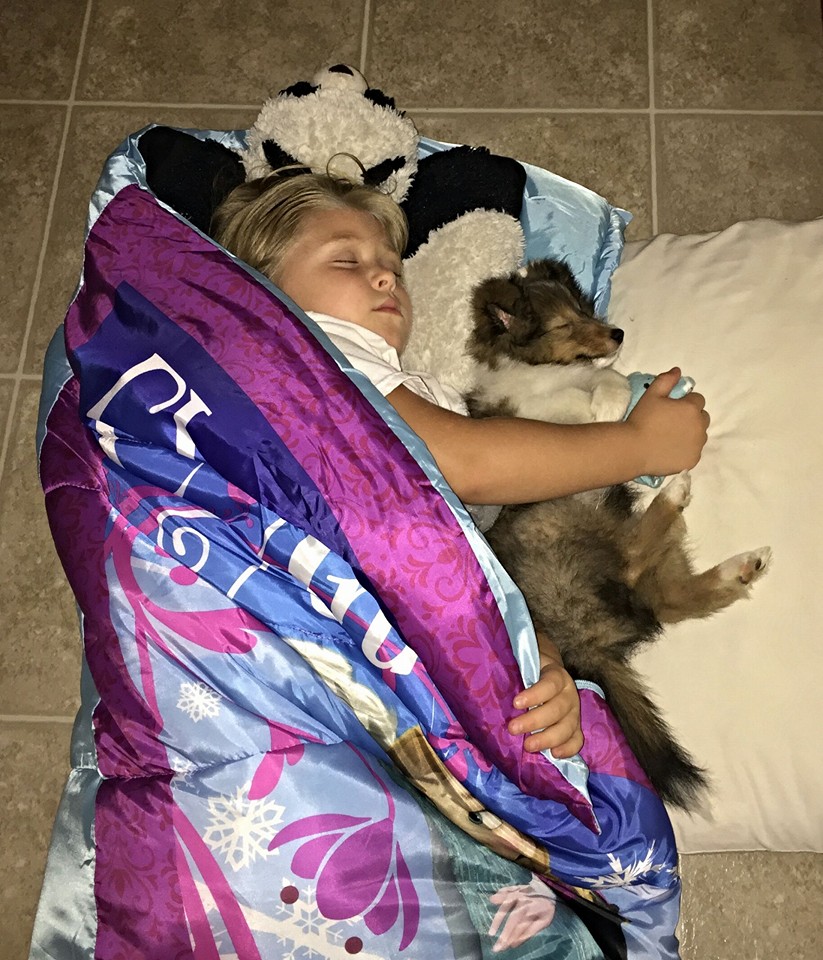
The biggest warning we have about SGA puppies is this:
If you have a child or grandchild with expressive eyes–have a plan or the SGA puppy is going to be with one of you. If you can, place an SGA puppy with a family that is close to you, and commits to follow-up with you. The SGA puppy will capture your heart.

Great article! I have saved my own SGA puppy. A Papillon who weighed 2.2 oz (63grams) at birth. She is now 6 weeks old and is a little spit fire. We will be placing her at an older age than the other puppies. I have so many people who want her!
What can I do to inform the interested parties? Can I share your blog? I want to make sure they understand about SGAs.
Also has anyone seen difficulties in the puppies as they age?
Thanks!
Kerrie
Larimar Border Collies and Papillons
Hi Kerrie,
Thank you for the feedback. You are welcome to share this where you like. Happy to help people save puppies.